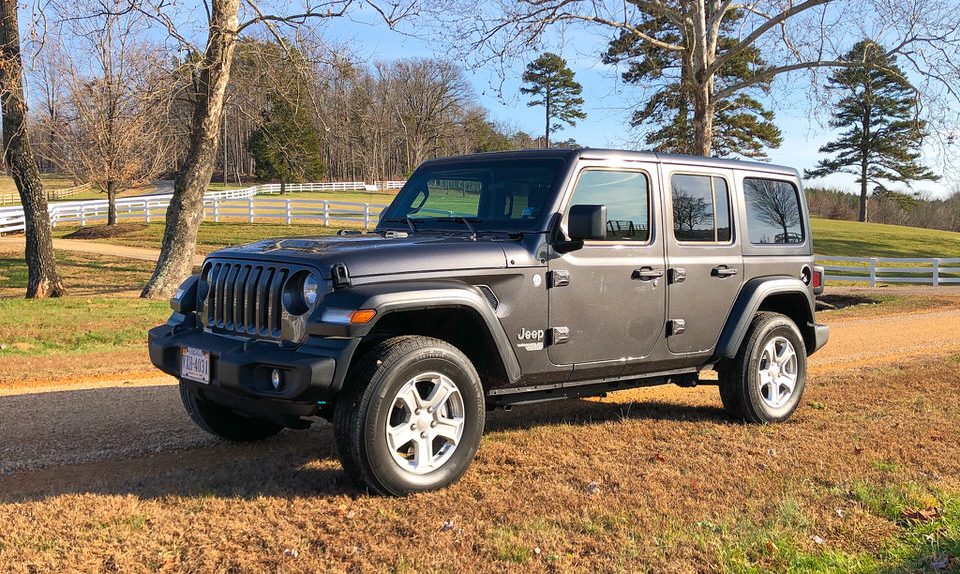The Jeep Wrangler has been a stalwart in the Jeep lineup since 1986 with each new version seeking to extend the truck’s off-road prowess and broaden its on-road performance to appeal to an ever wider daily driving audience. The JL series, released for the 2018 model year, seeks to push the boundaries in all directions again.
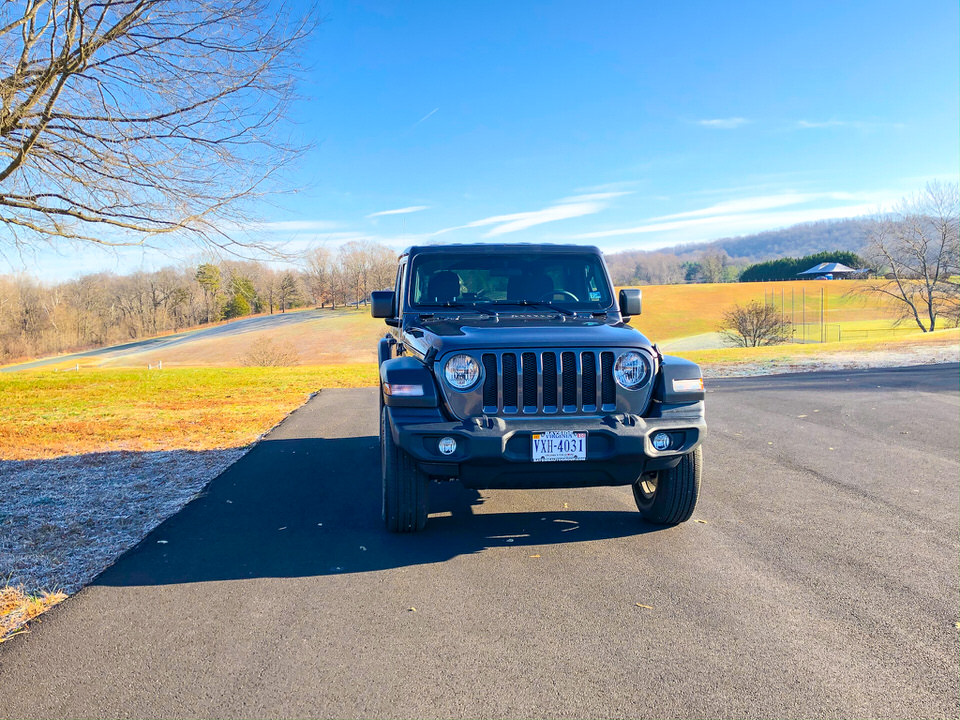
For 2020 there are a few updates to both the two door and four door models. The most significant of which is the arrival of the diesel engine in the four door. The updated water cooled turbo charged 3.0 liter unit boasts 260 hp and 442 lb torque at 1,400 rpm and is $4,000 option. Some quote more because the engine is only available with the 8-speed automatic. Other updates include three trim editions: the Willy’s, the Wrangler Freedom, and the Wrangler Black & Tan. Primarily styling specifications, there are some modest package changes to optimize each model. These three editions have proven popular in the past and I expect these new additions will be as well.
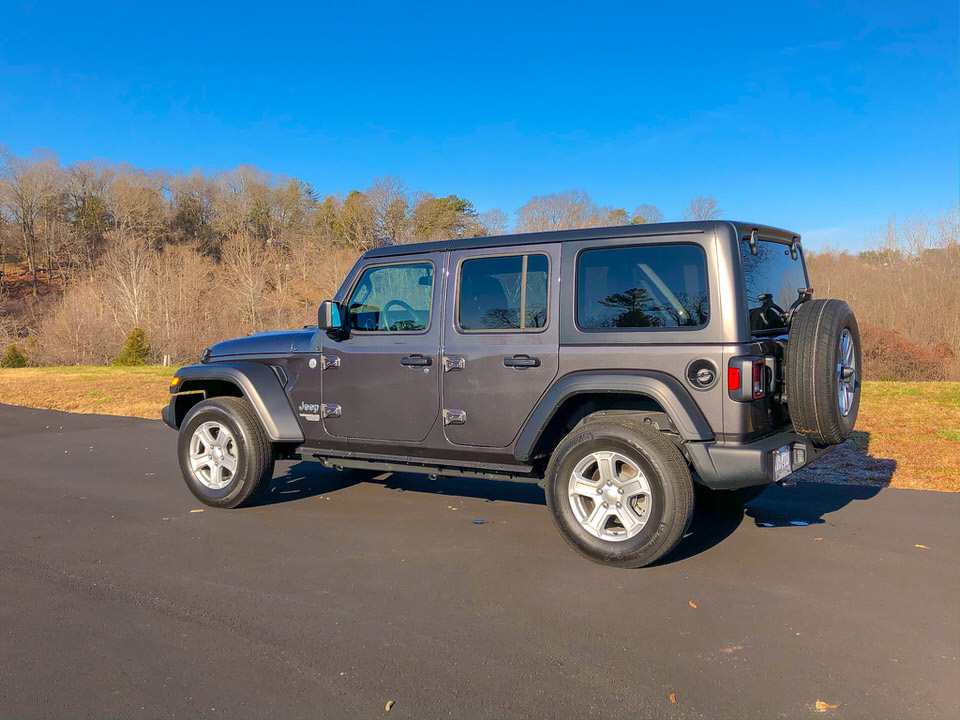
The 2020 Wrangler Unlimited reviewed here is a lightly specced Sport S with the black hardtop, the seven inch Uconnect infotainment system, an automatic transmission, Granite Crystal Metallic paint, and floor mats. Combined with its black interior (saddle tan is a no cost option), the truck looks the role of a Jeep Wrangler, with a bit of spiffiness and polish on its silver 17 inch rims in the December sun.
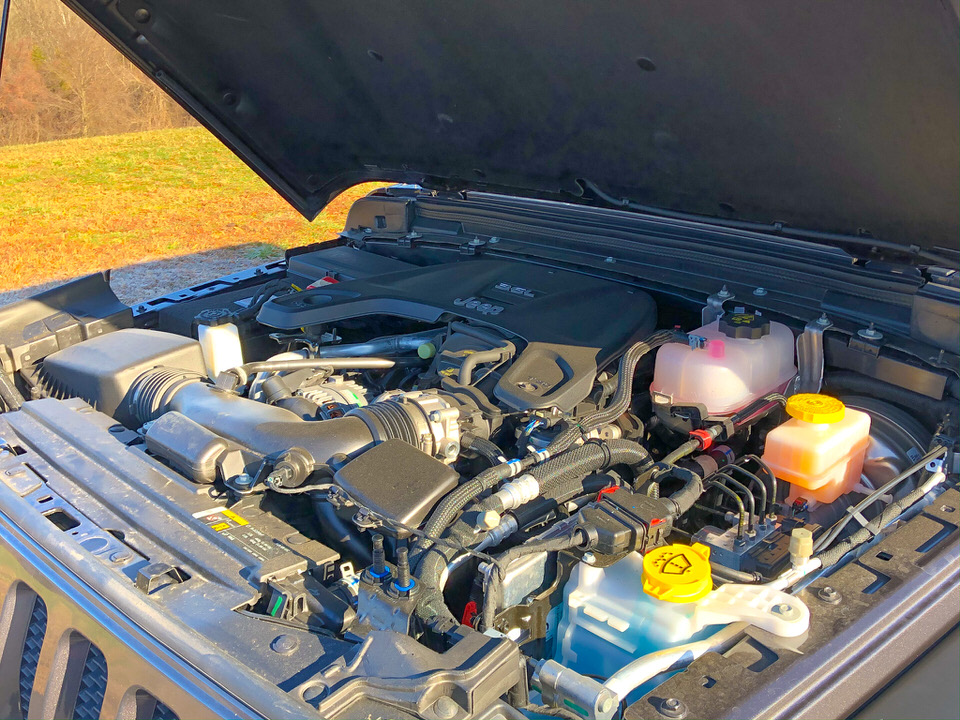
This Jeep Wrangler has the stalwart 3.6 liter six cylinder pushing out 285 hp at 6,400 rpm and 260 lb torque. Prior to reviewing this Wrangler Sport S, I test drove a Sahara with the 2.0 liter turbo four cylinder, producing 270 hp and 295 lb torque, in my local hood and a second Sahara with the same 3.6 liter six. The turbo four has good punch and I can understand why people like it along with the superior mileage, even though premium fuel is needed. Some models also have the mild hybrid 48 volt system as well. I found in mixed driving I prefer the 3.6 liter overall. For those interested in 0 – 60 times, they range from about 6.5 seconds to 6.8 seconds, which is the same as a 1980s Ferrari 308GTSI or 328GTS. Performance expectations change over time.
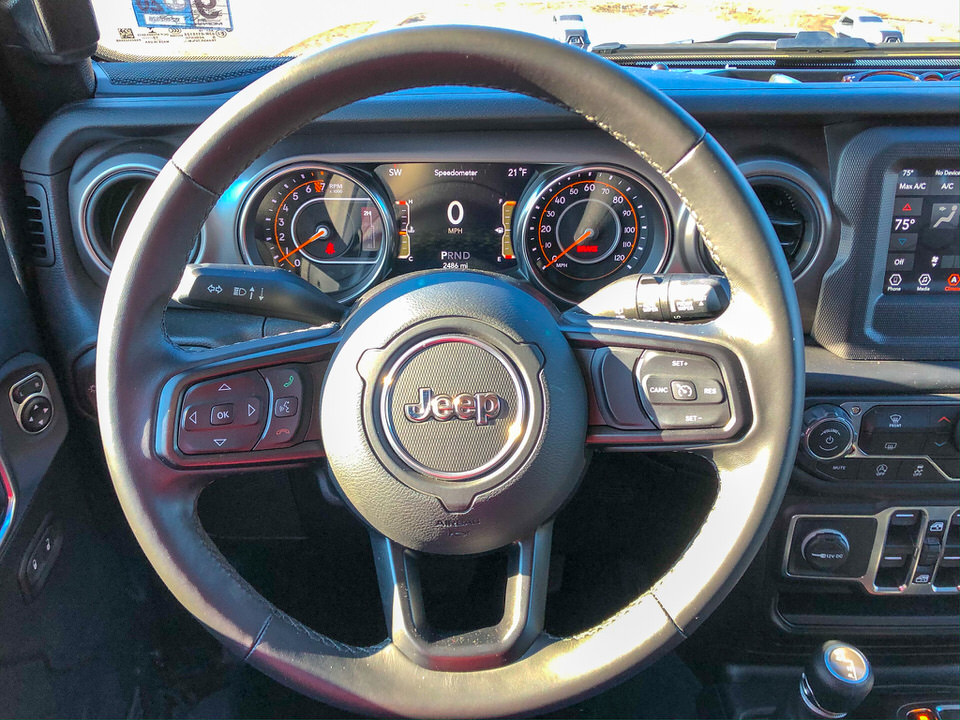
Chassis and ride dynamics are much improved over the older JK model. The dead steering on center is still present and in a straight line the truck still wanders a bit. I found making continuous movements shifting the truck left and right ever so slightly helped even this tendency out. As many will know, the steering design compromise is intentional to support the Wrangler’s off-road ability. For those driving on-road, some on the forums recommend playing with the camber and tire pressures to minimize the wandering effect.
Ground clearance and departure, breakover, and approach angles improve and vary slightly between models, with the two door getting a slight nod for better numbers. That’s before adding aftermarket goodies. All JL models benefit from being lighter than the JK by about 200 lbs. The brakes provided more than adequate stopping power and with the all season tires on this Sport S there shouldn’t be any complains in normal driving. With heavy knobbier tires, braking distances would increase, but that’s to be expected with less rubber touching the pavement. Off-road situations would be different.
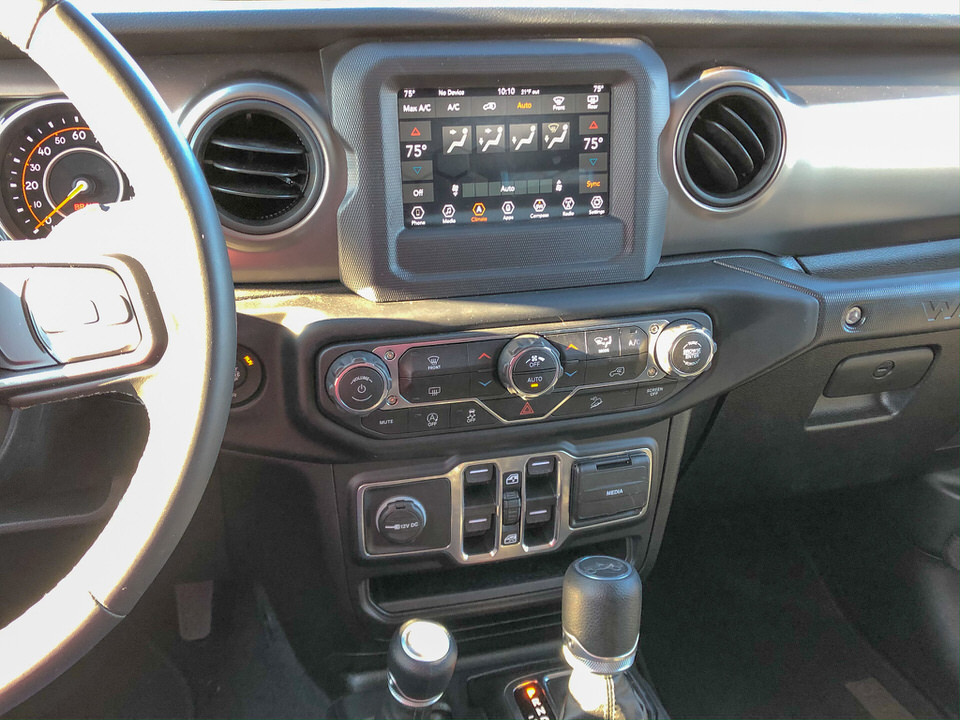
The interior improvements on the JL are welcome, which combined with the updated infotainment system, make the new truck is a nice place to spend time. In base specification or with the more expensive Sahara and Rubicon models, I was very comfortable in either the cloth or leather seats, and placement of the various controls – with or without gloves. Panel gaps, plastic textures, and overall fit and finish now better reflects a product that can cross the $60K mark. The Uconnect system is easy to use, quick to change settings when asked, and has a pleasing set of fonts to read at a glance.
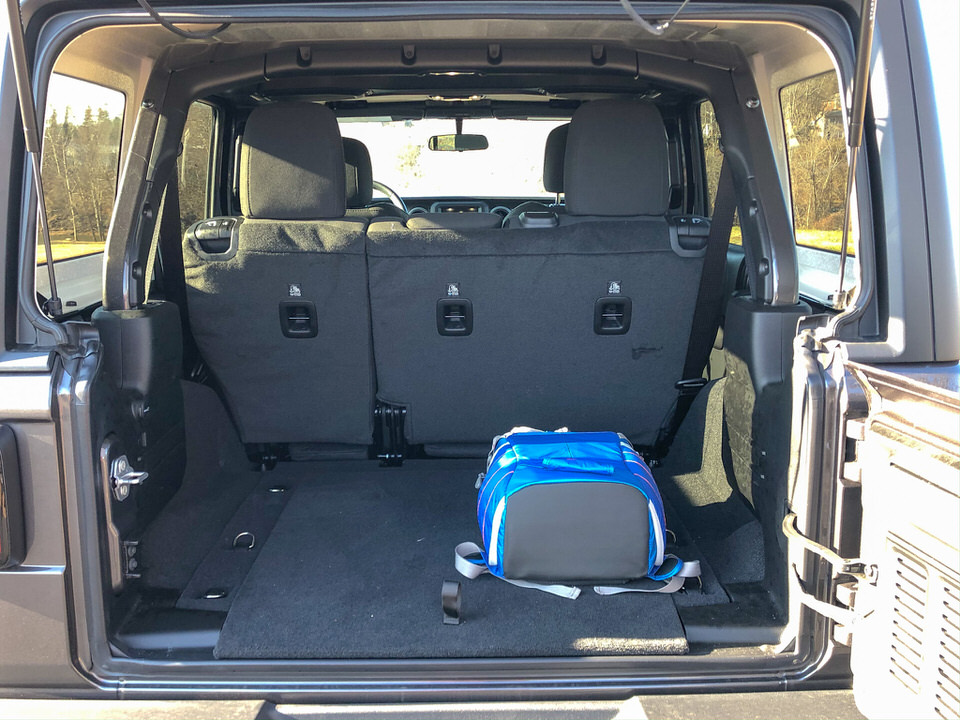
Moving to the rear seats and the tail area, the fit and attention to detail continues with similar plastic quality and metal gaps. I didn’t find any sharp edges or badly finished areas that could be a wear point over time. The tailgate is nicely balanced and requires very little effort to open and close – even with the spare tire attached. Thoughtful details abound as well, such as slots in the rear floor area for door and roof bolts, so they don’t get lost when these items are removed and stored for open air motoring.
As a styling exercise, the JL retains its classic Jeep Wrangler look while completely reworking the truck from top to bottom. Some manufacturers have done the same – such as the Mercedes Benz G550 – while others – such as the Land Rover Defender – have gone in a different route. The Jeep Wrangler and Benz G550 have been welcomed, while the LR Defender has been less universally praised. I think the Wrangler JL a handsome truck that absolutely reflects the design language of the Jeep brand and will look great ten years from now – covered in mud or all polished up in-town.
The cost/value question of the Wrangler is fascinating – judging by the Jeep forums and units sold or leased. The Wrangler is a practical 4×4, a premium truck, and in my view, an unconventional luxury vehicle for those wanting to splash out on something unique yet still remain connected firmly to the brand’s sensible military roots. The official price spread is from $28K to a bit more than $60K. However, my local dealer has new two and four door models outside their showroom for between $75K and $95K – a function of lots of expensive aftermarket add-ons. There is consistent demand for a new product Jeep does not build – a sub $100K Wrangler.

Jeep Wrangler resale values are very, very strong, with people paying top dollar for 20 year old versions with 200,000 miles on them. In my local area, that’s a $10/12K truck – if you can find one that’s road worthy. Lots of people really want to be part of the Jeep brand and are willing to pay for it. In my view, the best way forward is to either purchase or lease a new one or purchase a previously leased three year old model. Otherwise, you’re going to pay a lot for an older truck because demand is so strong.
While the Wrangler JL is much improved it has shortcomings. As mentioned above the steering can catch newbies off guard with it’s dead center and occasional quirks. The noise at highway speed can be unpleasant, particularly on longer journeys. The hardtop with sound deadening inserts definitely help, but there are limits for what is effectively a cinder block flying through space. A Jeep in any guise is not inexpensive and adding packages quickly ratchets the price beyond what many households can comfortably afford. Reliability can be an issue and some dealers are frustrating.
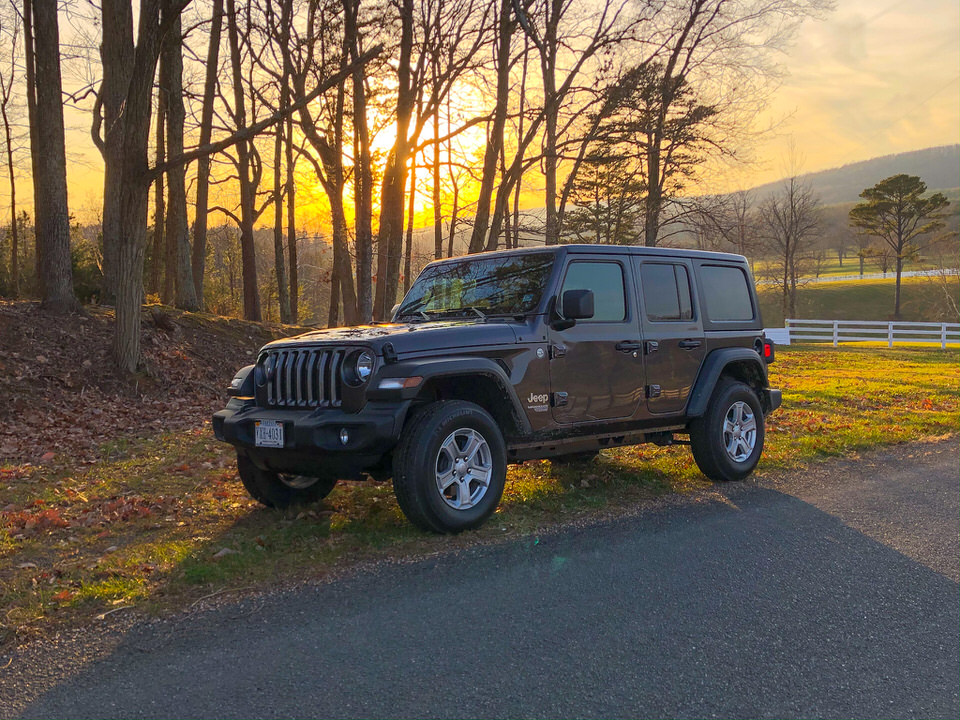
A special force in the Jeep and Wrangler world is the community of enthusiasts. They can provide a wealth of information on any issue or concern about a Jeep – whether as a current owner or a prospective one. From decisions around tire choice to working through a Jeep’s “extended warranty” – which is really a service contract – there is always someone who can provide an authoritative, detailed answer. The special Jeep wave among enthusiasts is a unique note of camaraderie among fans.

In sum, the Jeep Wrangler represents something genuinely unique in a sea of monotonous SUV and CUV products Stateside and around the world. The truck looks the part, has many unique features, and is coveted by young and old. The JL series is a significant improvement over its predecessor and much better on pavement – where most Wranglers live in the wild. If you can live with the Wrangler’s compromises and work through its pricing, you’ll be rewarded with a vehicle that has a wide range of skills and is very manageable in the real world.
Happy Boulder Skipping
Here is the Turo.com rental link for this 2020 Jeep Wrangler in Charlottesville, VA:
https://turo.com/us/en-us/suv-rental/charlottesville-va/jeep/wrangler-unlimited/688155?searchId=TmkRPS6N

